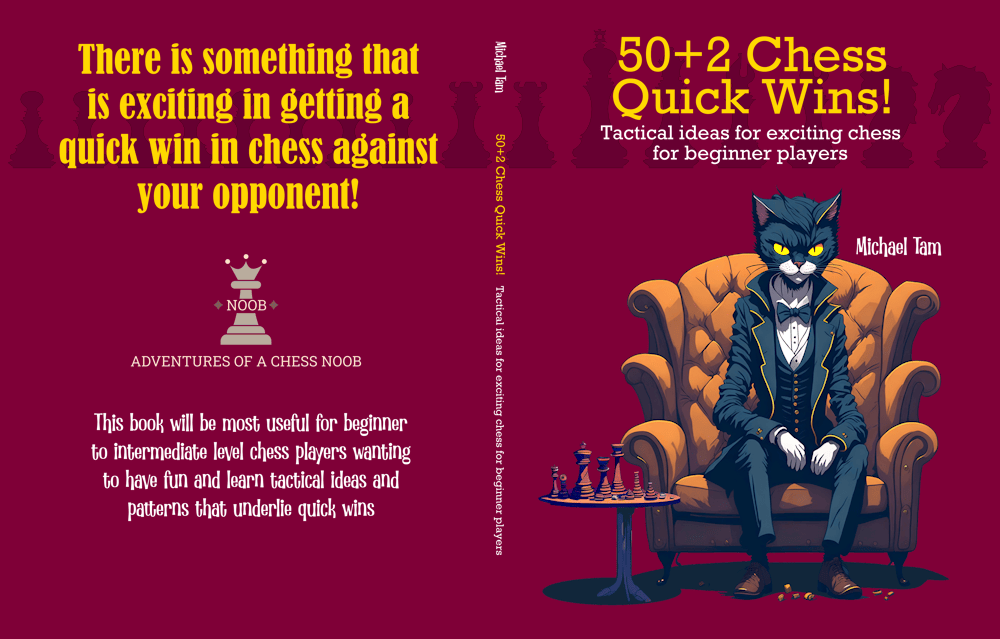
Chess THEORY vs TACTICS? | BRILLIANT WIN transposing Nimzowitsch to VIENNA!
#nimzowitsch #vienna #viennagambit #theory #tactics #brilliant
This was a very interesting game against a new subscriber and Ukrainian friend on chess.com. We had a bit of a chat after the game and we each had somewhat different approaches to learning. They had learnt quite a bit of opening theory, especially for less common openings. As for me, I focus somewhat less on theory and more on the tactical and strategic ideas of the approaches I play.
I had the White pieces and my opponent led with the Nimzowitsch Defense (1. e4 2. Nc6), which while a little suboptimal [+0.5] is potentially a very flexible approach. I knew no theory here, so I decided to play according to opening principles, but also my thinking was to see whether I could transpose the game into a Vienna Game or a Vienna Gambit, and so I played (2. Nc3). Stockfish evaluation suggests that (2... e5), transposing into the Vienna Game: Max Lange Defense is Black’s best move, but presumably, they avoided e5 for a reason.
Black played their other knight the next turn (2... Nf6). Here, I suspected that the best move would be (3. d4) according to opening principles, but that this might then transpose into a fairly closed and positional game. So, I decided to play (3. f4)! Stockfish calls this an inaccuracy with the evaluation dropping to equality [0.00] but I was baiting Black to play e5, to prevent my own e5.
Why would I do that? Well, Black entered my trap and after (3... e5 4. fxe5), the position transposes into the Vienna Gambit Declined, 3... Nc6! This is a line I'm very familiar with, and more than that, is an outright mistake for White [+1.5]!
By move 9, I was basically developed, had control of the centre with my pawns, and about to launch a devastating attack on Black's f7 pawn. Black, however, was relatively minimally developed and had limited control of space. Their last move (9... Bg4) ostensibly pinned my knight to the queen, but as we shall see, this was an inaccuracy as it doesn't work against the pressure on f7!
I capture with a pawn in the centre (10. exd6), creating a fully open e-file exposing Black's king, and creating a square for my "pinned" knight currently on f3. Black had one last opportunity to limit the damage by defending the f7 pawn but didn't see the tactic. The evaluation was now [+5 to +6].
Now, I launched one of my favourite tactical manoeuvres in the Vienna! First, bishop sacrifice capture of f7 with check (11. Bxf7+), dragging Black's king onto the f-file. This sacrifice creates a fully open f-file so the knight advance with check (12. Ne5+) is a magical DOUBLE CHECK (knight and discovered check with rook), making the impossible possible! I love how the attacking piece gives check from a defended square and opens reverses the pin and attack on my queen, to a discovered attack on the bishop! The king is forced to retreat, and I capture the light square bishop, developing my queen into the attack (12... Ke8 13. Qxg4).
My opponent makes one final aggressive launch, flinging their g-pawn forward, presumably to prevent a queen advance. However, this was a mistake [+M16], as it now weakened the light squares around their king. Next move (16. Qh5+) and Black has only two legal moves. One is a mate-in-one. The other results in a rook skewering the king against the queen on the open d-file (16... Kd7 17. Rd1+) causing emotional damage. GG!
The big takeaway from this game is that learning opening theory is helpful and useful. However, it can only take you so far - most games will deviate from theory a few moves into the opening. It is the understanding of the tactical and strategic ideas of an opening that will allow you to capitalise on opportunities in the opening, and into the middlegame.
Game on chess.com: https://www.chess.com/game/daily/545057209




